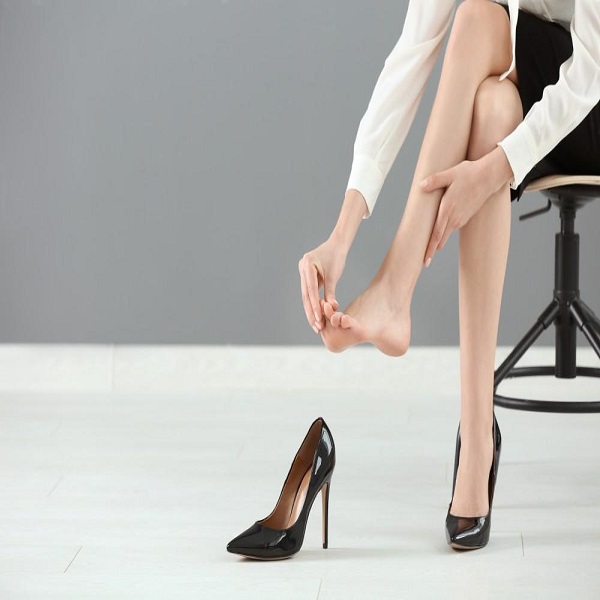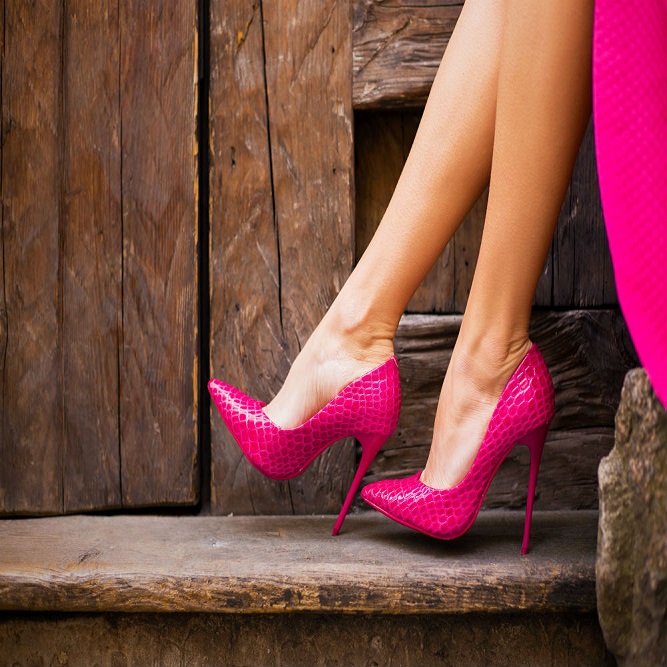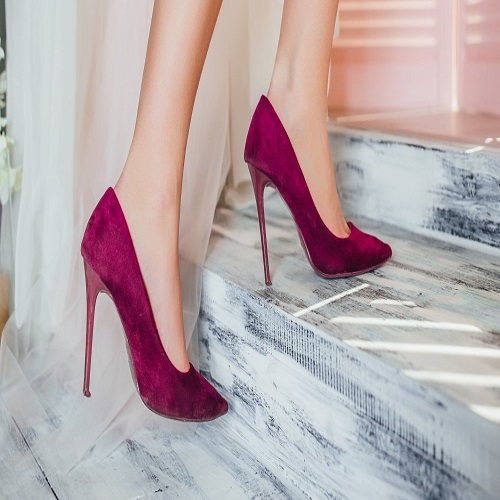Evolution of High Heels Through History
Origins of High Heels
Why Do Women Wear High Heels – High heels have a rich history, dating back centuries. Originally, they served a functional purpose, elevating the feet above mud and street filth. In the 10th century, men in horseback-riding cultures wore heels to help secure their feet in stirrups. As time passed, the heel began to symbolize nobility and privilege, influencing their adoption by the upper classes of society.
Historical evidence suggests high heels’ prominence in the Persian military. These heels helped soldiers by providing stability while shooting arrows from horseback. The style soon spread to Europe, where heels became a fashion statement among the aristocracy. Women started wearing high heels as a way to adopt masculine powers associated with the shoe’s history.
A pivotal moment came when high heels caught the eye of Louis XIV of France. Known for his love of extravagant attire, the Sun King popularized heels adorned with intricate patterns and decorations. The first women to wear heels were those in his court, setting a trend that echoed throughout Europe.
High Heels as a Status Symbol
The transition of high heels into a symbol of status developed alongside their aesthetic evolution. In the 17th and 18th centuries, only the wealthy could afford the luxurious materials and custom designs that high heels often entailed. These towering shoes became synonymous with power and prestige, physically elevating the wearer above others. High heels also signified a life of leisure, as practicality would not allow those engaged in manual labor to wear them.
Women soon adopted high heels as a fashion staple, with their height and elaborate designs signifying a woman’s social standing and femininity. This symbolism has persisted, with designer high heels still representing luxury and sophistication today. Famous monarchs and public figures would often have portraits painted while wearing high heels, further cementing the shoe’s status as a mark of authority and influence.
The keywords ‘why do women wear high heels’ relate to this historic glamorization of heels and the enduring allure they have as a status symbol. By understanding the origins and historical context of high heels, we can better appreciate why they continue to captivate and charm women across the globe.
 Psychological Appeal of Wearing High Heels
Psychological Appeal of Wearing High Heels
Increased Confidence and Perceived Attractiveness
The psychological draw of high heels is notably strong. Many women report feeling more confident when they slip into a pair of heels. This boost in self-assurance is not purely imagined; it’s anchored in social perceptions. Heels can make a woman feel more authoritative and poised, contributing to a positive self-image. Studies suggest that this increase in confidence can stem from the association of high heels with adult femininity and sophistication.
Additionally, high heels have been linked to perceived attractiveness. This may relate to cultural norms that tie high heels to glamour and elegance. Attraction is often heightened by these implicit connections, and the act of wearing heels can exalt a woman’s presence in social situations, making her feel more alluring and noticed.
Keywords such as ‘why do women wear high heels’ remind us that the appeal often transcends comfort, embracing the psychological edge these fashion items provide.
The Illusion of Longer Legs and Elevated Stature
Beyond confidence and attractiveness, high heels carry a physical allure by creating the illusion of longer, leaner legs. The elevated heel alters posture, arching the back slightly and accentuating leg muscles. This makes the legs appear longer and the overall silhouette more slender, which can be seen as aesthetically pleasing in many cultural contexts.
The additional height gained from wearing heels also contributes to an elevated stature. Being taller, even if artificially, can not only impact how a woman perceives herself but also how she is perceived by others. Height is often associated with power and dominance in social hierarchies. Thus, the simple act of wearing high heels can influence interpersonal interactions, making them a powerful tool in both personal and professional settings.
In summary, the psychological appeal of wearing high heels goes beyond surface allure. It taps into deeper aspects of confidence, attractiveness, and presence, often making them an inseparable part of a woman’s wardrobe despite the keywords ‘why do women wear high heels’ simplifying a rich tapestry of reasons.
Social and Cultural Influences
The way society looks at high heels shapes why women wear them. Media images and star power play big roles. People see celebrities in heels and want to mimic them. Movies, TV shows, and fashion magazines often show women in high heels. These images send a message. They say that high heels are stylish and important for a polished look. This influence is powerful and it can make women feel like they need heels to fit in.
Media and Celebrity Impact on High Heel Trends
Celebs set trends. Every time a famous woman wears heels, fans notice. They see these stars on red carpets and in fashion shoots. High heels are a key part of these glamorous looks. This makes high heels popular. Fashion influencers and bloggers also push this trend. They show their high heels on social media. They help make high heels a must-have item. It’s not just about fashion. It’s about the lifestyle that goes with it. Heels equal glam and success in many people’s eyes.
High Heels in the Workplace and Social Settings
In many jobs, women feel pressure to wear high heels. They think it makes them look more serious and professional. In some places, it’s even an unspoken rule. In social scenes, high heels are often a must. They’re part of dressing up for parties and dates. Heels can make an outfit look better. They can also change how a woman carries herself. This can make her more noticeable. But, it’s key to remember that it’s each woman’s choice. Comfort and style matter, but so does personal preference. Women weigh these factors when they decide to wear high heels or not.
Health and Comfort Considerations
The quest for style often involves high heels, but comfort is crucial too. When women choose footwear, finding a balance between looking good and feeling good is key. High heels can transform an outfit, but they must also offer comfort for long wear. Today’s designers try to blend both, offering heels with padded soles, ergonomic design, and secure straps. Women are advised to select heels that fit well, provide support, and match their foot shape. Alternating high heels with flat shoes can prevent discomfort. It’s important to listen to one’s body and switch to comfier shoes when needed.
Balancing Style and Comfort
Heels offer elegance, but not if they cause pain. Smart choices can help. Women look for heels with cushioning and arch support. They try various heights to find what works best. Soft insoles and wider toe boxes can prevent soreness. Comfort-focused brands gain popularity among those seeking both style and relief. Women no longer need to sacrifice comfort for fashion; instead, they merge both to create a balanced, confident stride.
Potential Health Risks of Regular High Heel Use
Despite their appeal, high heels can pose risks. Prolonged wear can lead to foot pain, bunions, and more. The pressure on the ball of the foot may cause issues like metatarsalgia. Ankles can become strained, and posture may suffer. Long-term use might even bring about back problems. It’s recommended to limit high heel use, choose lower heels, and stretch feet often. Recognizing these risks helps women make informed choices about when and how to wear high heels.
Design and Fashion Aspects of High Heels
High heels are more than just shoes; they are a fashion statement. Design plays a huge part in why women love to wear high heels. Good design can turn a simple outfit into something special. Designers know this and work hard to create heels that stand out.
The Role of Iconic High Heel Brands
Big brands have shaped the high heel world. Brands like Christian Louboutin, with their red soles, have become famous. People see these shoes and think luxury and style. Jimmy Choo and Manolo Blahnik are also top names. They are known for their elegant designs and high-quality materials. These brands have changed how people see high heels. They’ve made heels symbols of high fashion and desire.
Trends and Innovations in High Heel Design
High heel trends change often. Designers come up with new ideas to keep heels exciting. They use different colors, materials, and shapes. Now we see heels with clear straps and bold prints. Comfort has also become a big focus. Designers are making heels with better support. Innovations like memory foam insoles and flexible soles make heels easier to wear. These changes help women feel good and look great in high heels. It’s clear that design and fashion are key to understanding why women wear high heels.
Empowerment and Personal Choice
High Heels as a Tool of Empowerment
High heels do more than just elevate height; they lift confidence. Many women feel empowered when wearing heels. They see them as a choice that reflects personal strength and freedom. Heels can make a statement. They say, “I’m in control” and “I am powerful.” In the boardroom or at a social event, heels often add to a woman’s sense of command. Choosing heels can be a way for women to express themselves and stand out.
The Debate Around High Heels and Feminism
The topic ‘why do women wear high heels’ stirs up a heated debate in feminist circles. Some argue that heels are tools of oppression. They say society forces heels on women to meet beauty standards. Others view them as icons of empowerment. These feminists believe heels are a way for women to own their sexuality and power. It’s a complex issue. Each viewpoint offers insight into how heels influence women’s roles today. Personal choice is key in this discussion. Women weigh the pros and cons and decide for themselves how heels fit into their lives.
High Heels in Different Cultures and Contexts
The Significance of High Heels in Various Cultures
Around the world, high heels hold different meanings. In some cultures, they symbolize femininity and beauty. Many Asian countries view them as essentials for formal attire. Latin American dance styles often pair with specific heels, stressing movement and grace. High heels in Western societies are tied to fashion and prestige. They often show up at events where dress codes are strict. It’s clear that across the globe, high heels have found a unique place in cultural expressions.
The keywords ‘why do women wear high heels’ hint at these varied cultural views. For many, heels are more than just footwear; they reflect cultural identity and heritage. As a form of expression, they carry weight beyond mere style. Women choose them to honor traditions, engage in cultural practices, or make a personal statement.
High Heels for Different Occasions and Events
High heels shine at events. From weddings to galas, they complete an outfit. In the professional world, they convey seriousness and style. Many women pick them for job interviews and meetings. For parties, heels add a touch of glamour. They also have a place in casual events when paired with jeans or shorts.
The keywords ‘why do women wear high heels’ tap into these event-based choices. It’s about matching the shoe to the occasion. Heels can transform a casual look into something special. Or, they can be that final touch that polishes a formal ensemble. Each event invites a different heel style, height, and design, showing high heels’ versatility and enduring appeal.
